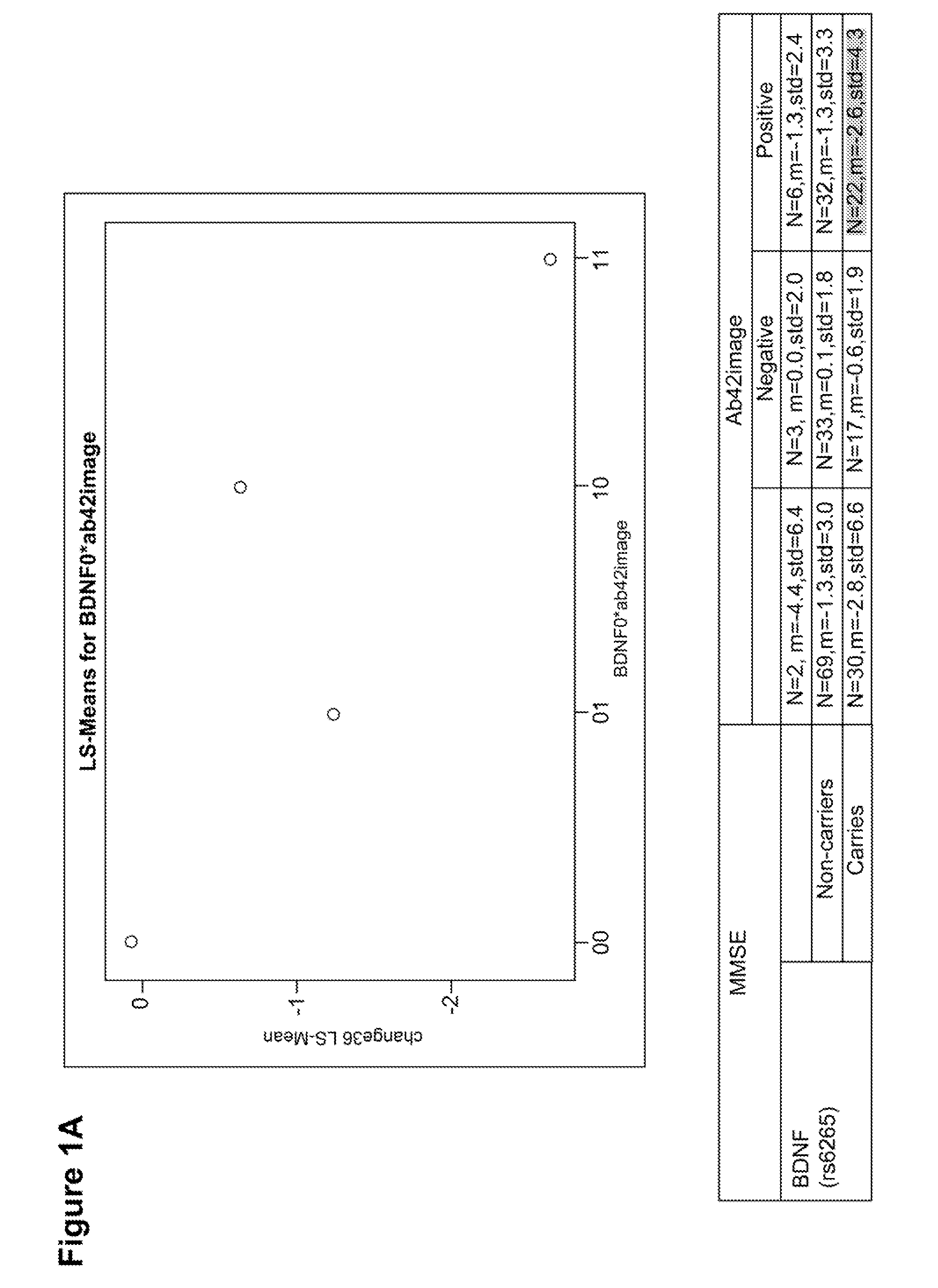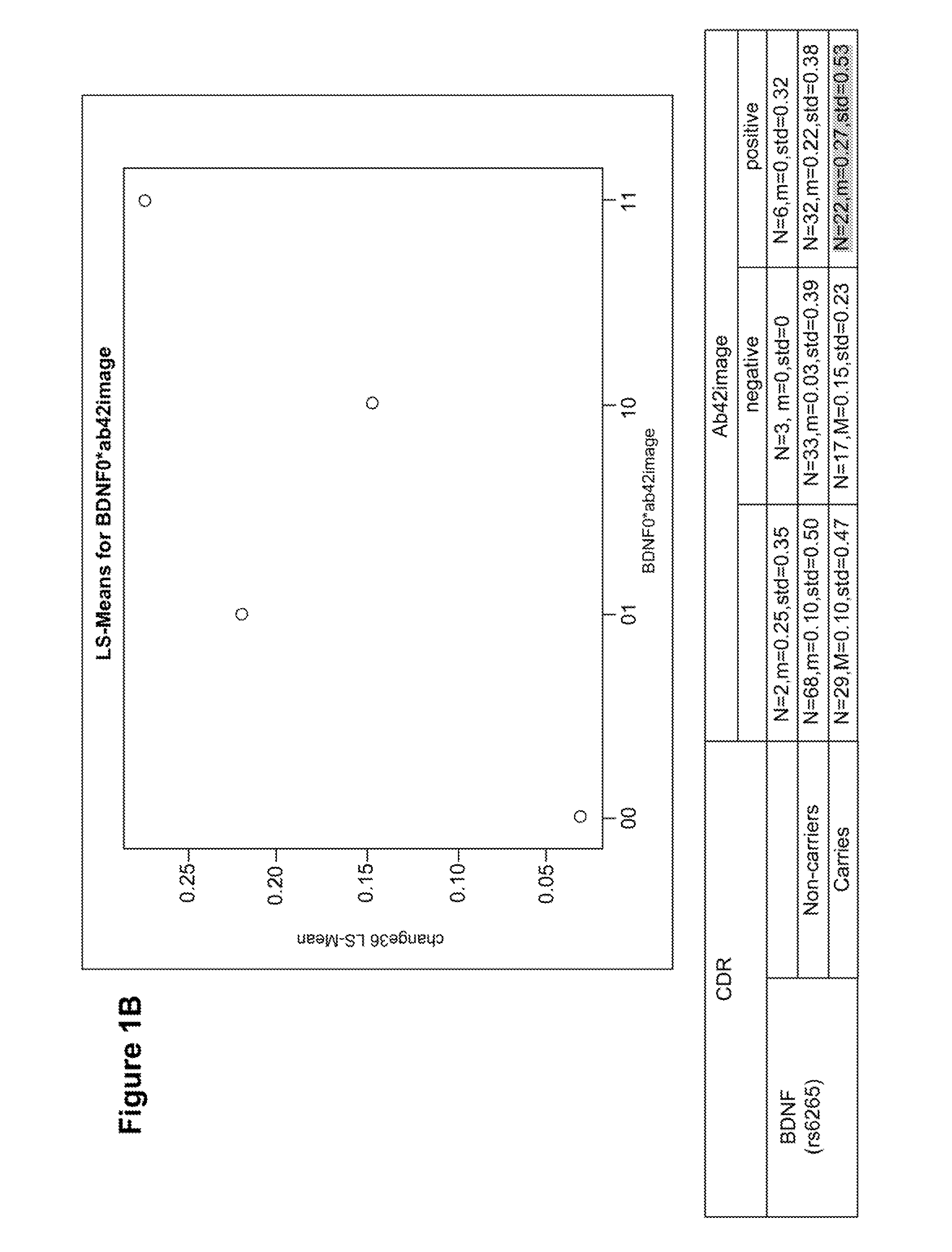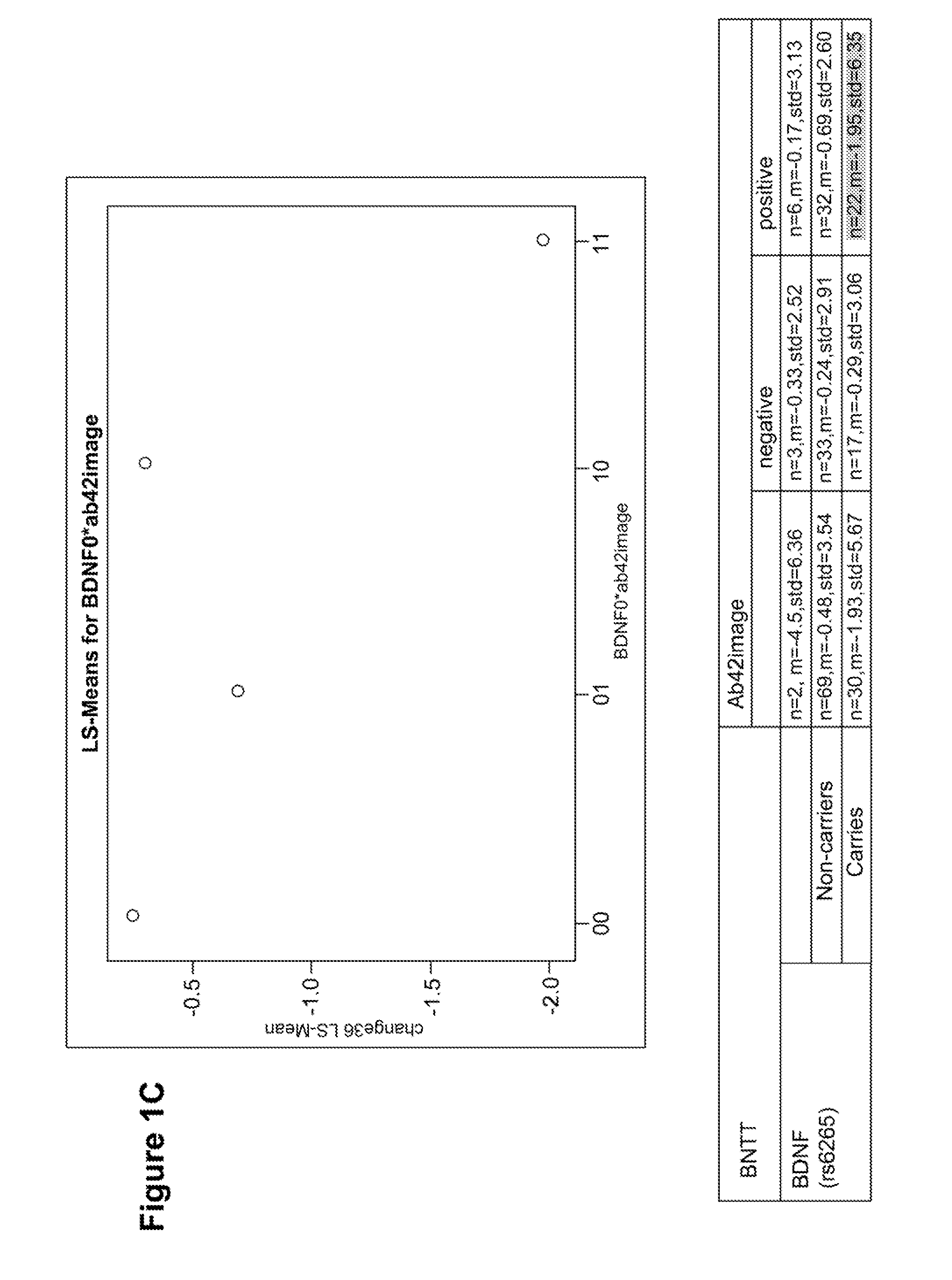Genetic and image biomarkets associated with decline in cognitive measures and brain glucose metabolism in populations with alzheimer's disease or those susceptible to developing alzheimer's disease
a brain glucose metabolism and gene biomarker technology, applied in biochemistry apparatus and processes, combinational chemistry, chemical libraries, etc., can solve the problems of little data to explain such variability and the appearance of disease symptoms, and achieve the effect of a faster decline in brain glucose metabolism
- Summary
- Abstract
- Description
- Claims
- Application Information
AI Technical Summary
Benefits of technology
Problems solved by technology
Method used
Image
Examples
example 1
Genetic and Image Biomarkers Associated with Decline in Multiple Cognitive Measures and Brain Glucose Metabolism in Populations of Early Alzheimer's Disease
[0162]Statistical analyses of the Australian Imaging, Biomarker and Lifestyle (AIBL) Flagship Study of Ageing data revealed that a mutation, Val66Met at rs6265, in the BDNF gene is strongly associated with faster cognitive decline with the presence of brain amyloid in the normal-to-early Alzheimer's disease population as described in Lim Y. et al., Neurobiology of Aging, article in press, p. 1-8 (2013).
[0163]This example describes the study using the Alzheimer's disease Neuroimaging Initiative (ADNI) data.
[0164]Data Acquisition:
[0165]The genetic (Plink format) and clinical data were downloaded from the ADNI website. The genetic data were pre-processed following the procedures applied by the ADNI genetic core as described in Shen L, et al., Neuroimage 53: 1051-1063 (2010). The clinical datasets, which contain demographic variables...
PUM
| Property | Measurement | Unit |
|---|---|---|
| pittsburgh compound B positron emission tomography | aaaaa | aaaaa |
| nucleic acid hybridization assay | aaaaa | aaaaa |
| nucleic acid polymerization assay | aaaaa | aaaaa |
Abstract
Description
Claims
Application Information
 Login to View More
Login to View More - R&D
- Intellectual Property
- Life Sciences
- Materials
- Tech Scout
- Unparalleled Data Quality
- Higher Quality Content
- 60% Fewer Hallucinations
Browse by: Latest US Patents, China's latest patents, Technical Efficacy Thesaurus, Application Domain, Technology Topic, Popular Technical Reports.
© 2025 PatSnap. All rights reserved.Legal|Privacy policy|Modern Slavery Act Transparency Statement|Sitemap|About US| Contact US: help@patsnap.com



